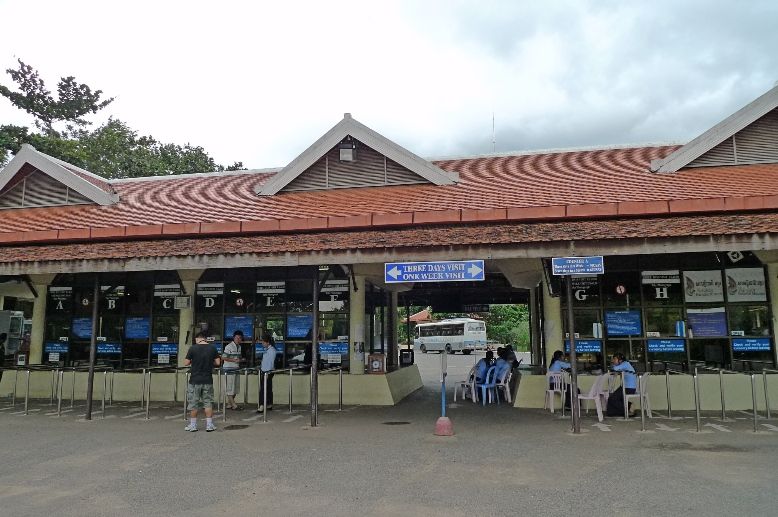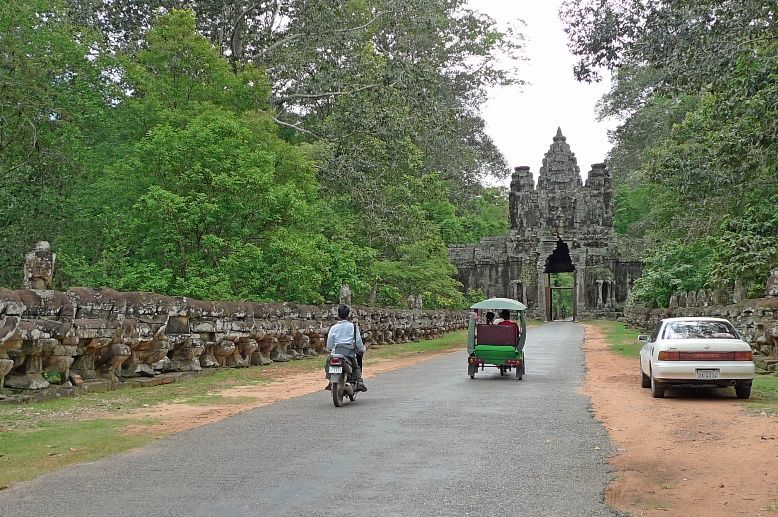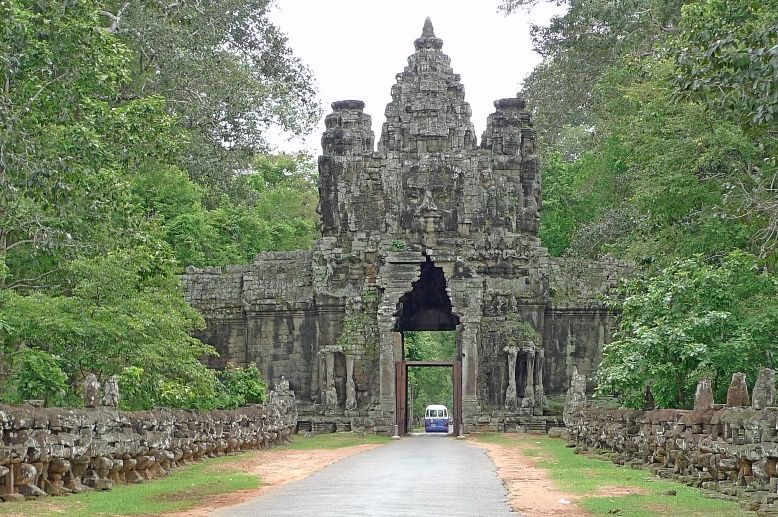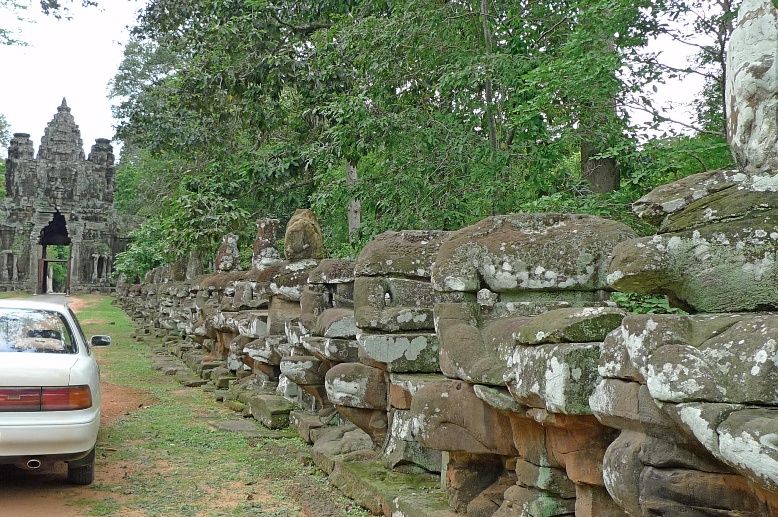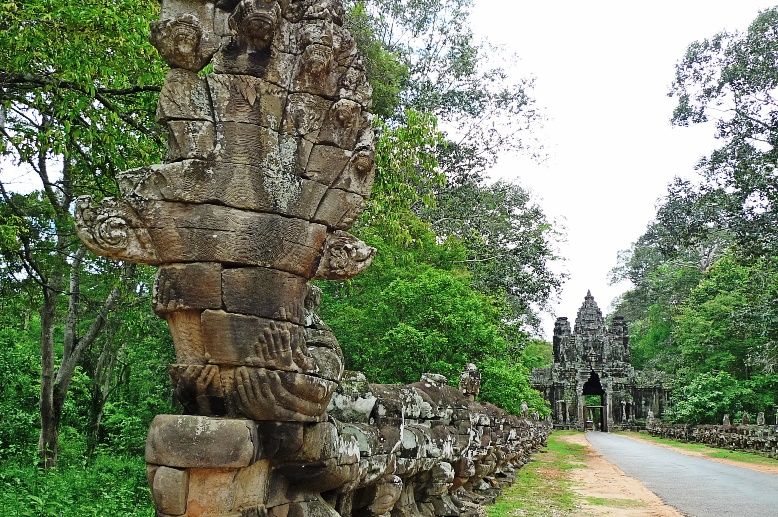Of all the temple ruins I visited in the Angkor Wat Archaeological Park, the
Bayon temple is my absolute favourite!
Located in the middle of
Angkor Thom, the Bayon temple was built in the late 12th or early 13th century as the official state temple of the Mahayana Buddhist King Jayavarman VII.
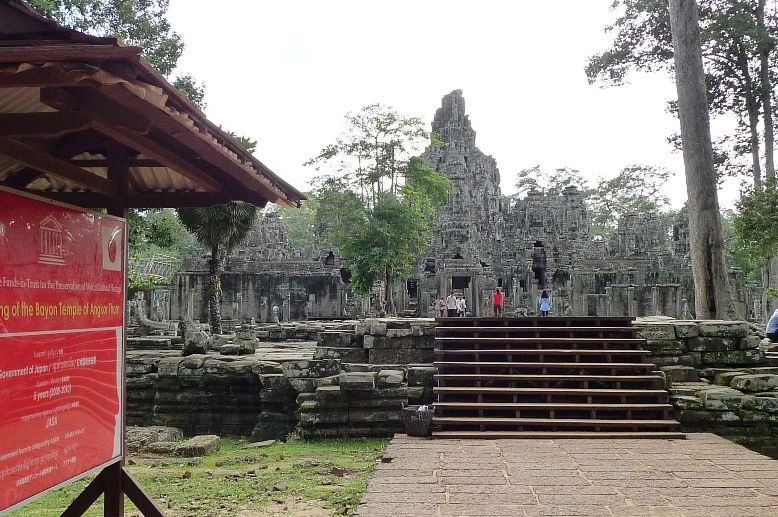
After passing through the
Victory Gate, we headed straight to Bayon. At the main entrance, I saw this signboard.
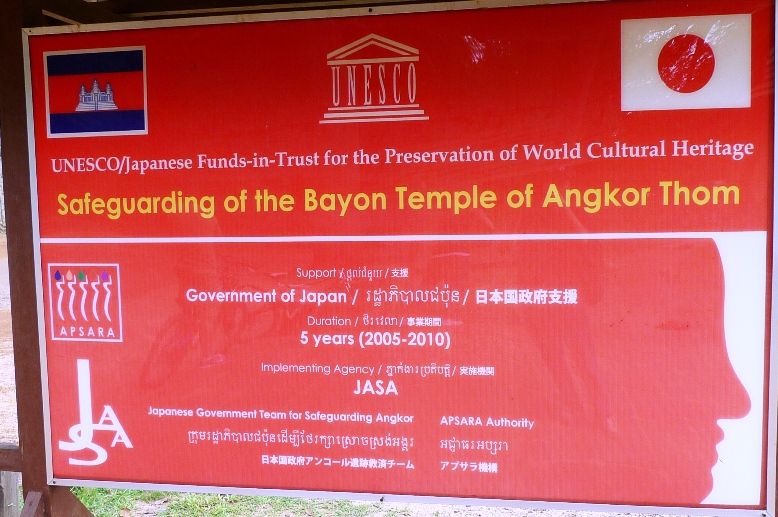
It appears that the Japanese Government had committed to finance UNESCO's project to preserve, restore and safeguard the entire Bayon complex. Wow! I think they deserve an applause!

I was told that the best time to visit Bayon Temple would be in the morning, preferably before 10am as that period provides optimal lighting conditions to bring out the best in photography.
Jam, his friend and I went there after 2pm, so I guess the pictures we took were not really good.
However, loads of tourists visit in the morning, so I guess it was OK - anything to avoid the crowd!
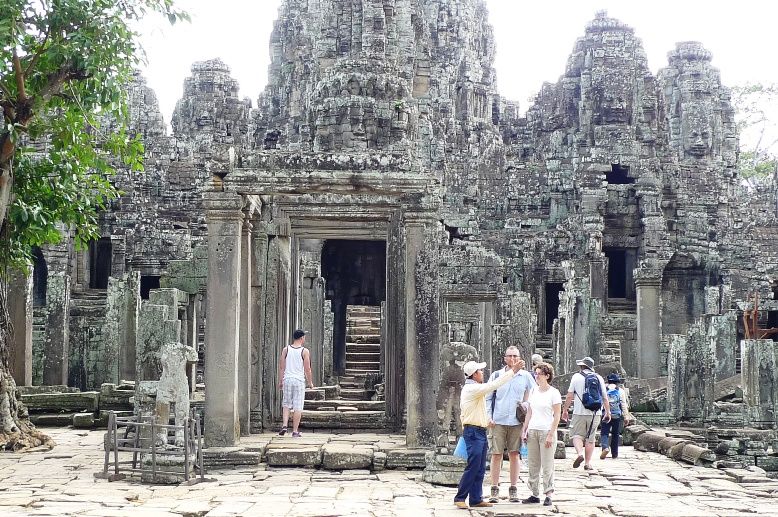
The Bayon was the only Angkorian state temple to be built primarily as a Mahayana Buddhist shrine dedicated to Buddha. After the death of King Jayavarman VII, it was modified and augmented by later Hindu and Theravada Buddhist kings in accordance with their own religious preferences.

Built as a square, covering a total surface area of 3 square kilometres, the Bayon temple is orientated towards the East, following Buddhist architecture.
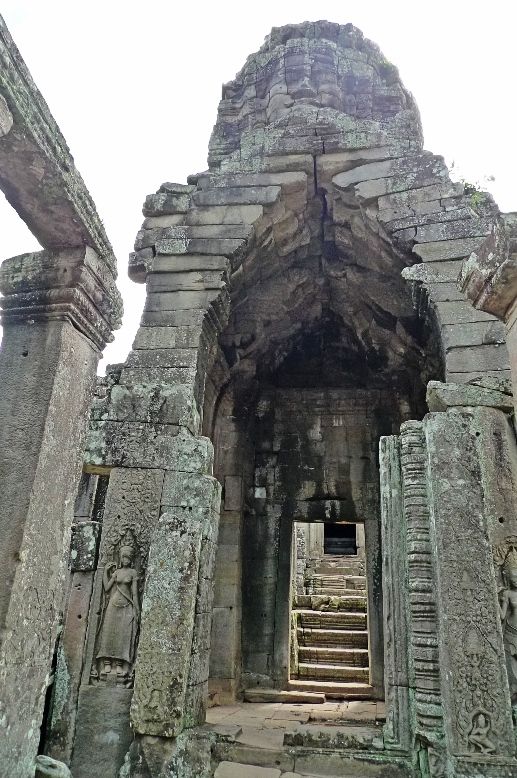
The temple walls featured a lot of bas-reliefs depicting battle scenes and scenes from everyday life. I took some photos of carvings depicting Apsara dancers.
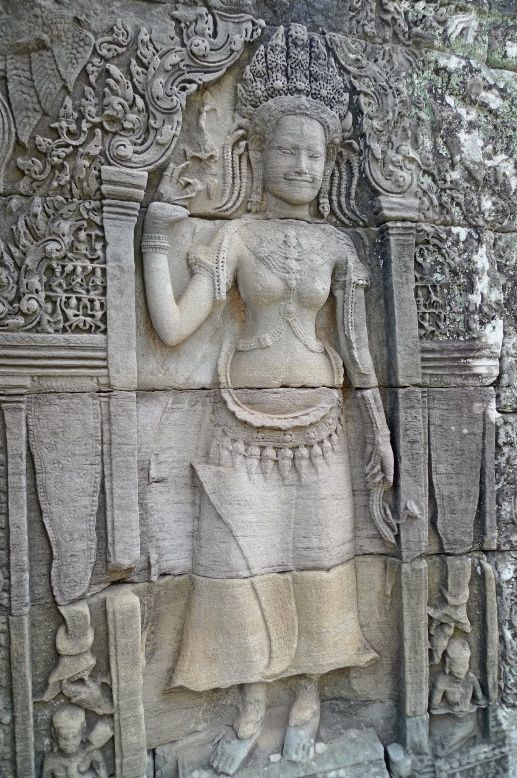
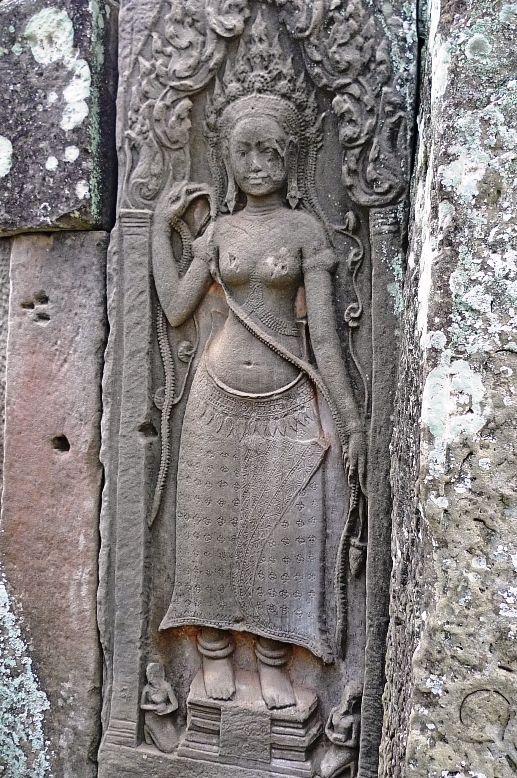
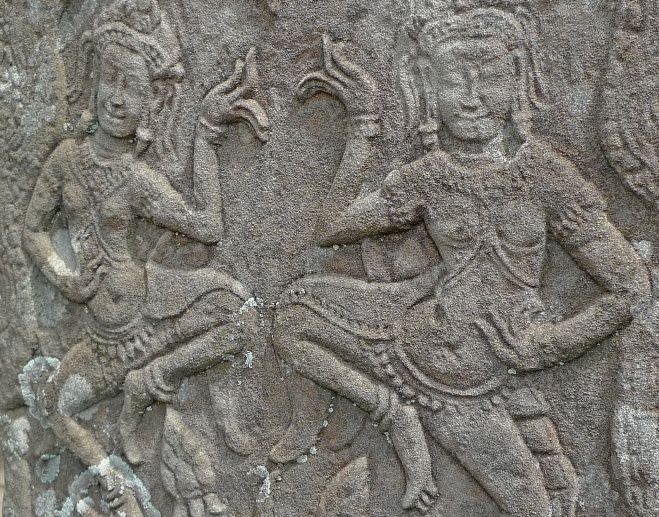
By the way, we had a chance to watch Apsara dancers perform the Khmer Classical Dance during dinner on our second night in Siem Reap, but that will be a story for another post.
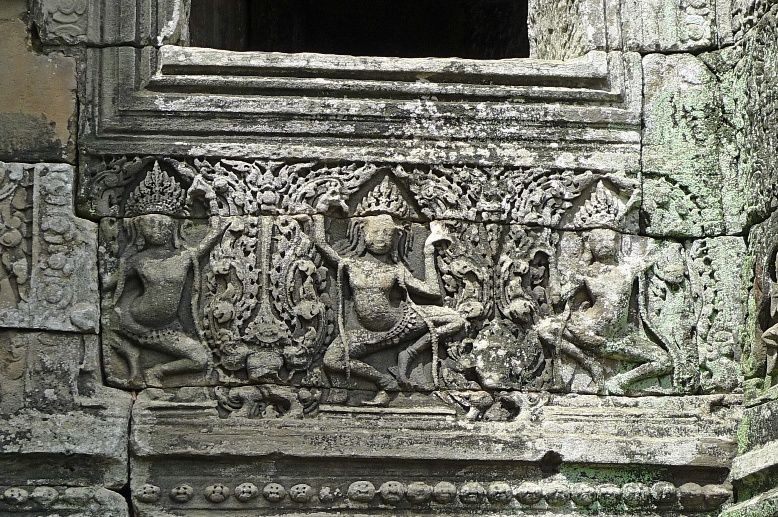
Does this look like a face to you? It sure does to me, and I love it!
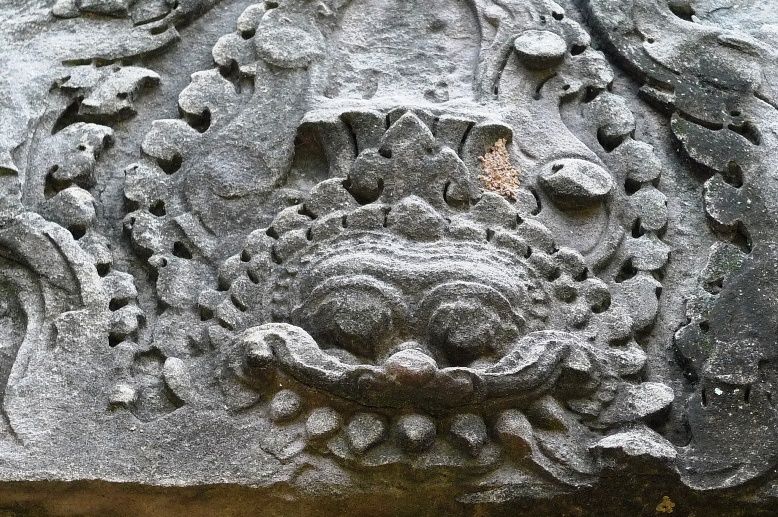
There were many steps leading up to the upper terrace where Bayon's most distinctive feature was found - the over 200 giant stone faces!
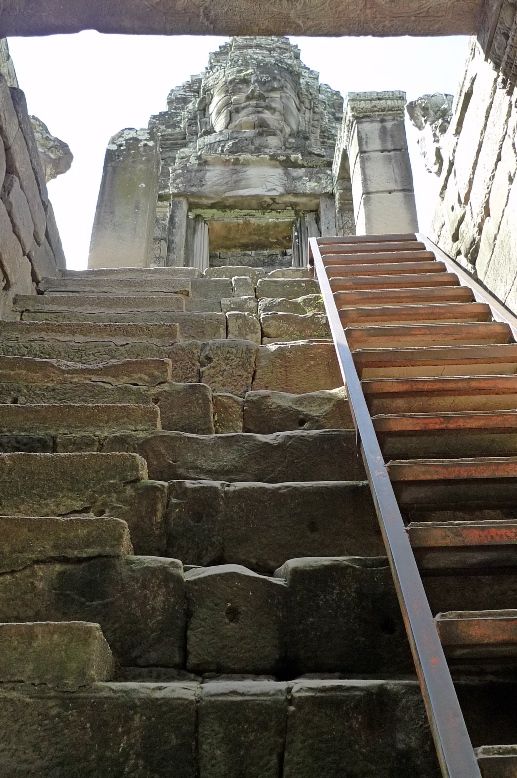
Going up was easy but coming down was slightly more difficult as the steps looked kind of steep!

So what do tourists from all over the world visit Bayon for? Yes, it's for the famous giant stone faces! Look at this couple admiring the stone face tower!
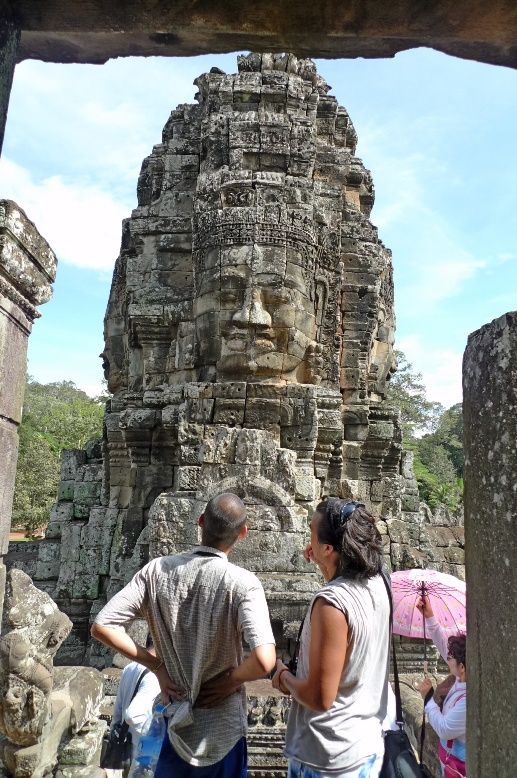
Tourists were snapping away like crazy. And so was I!
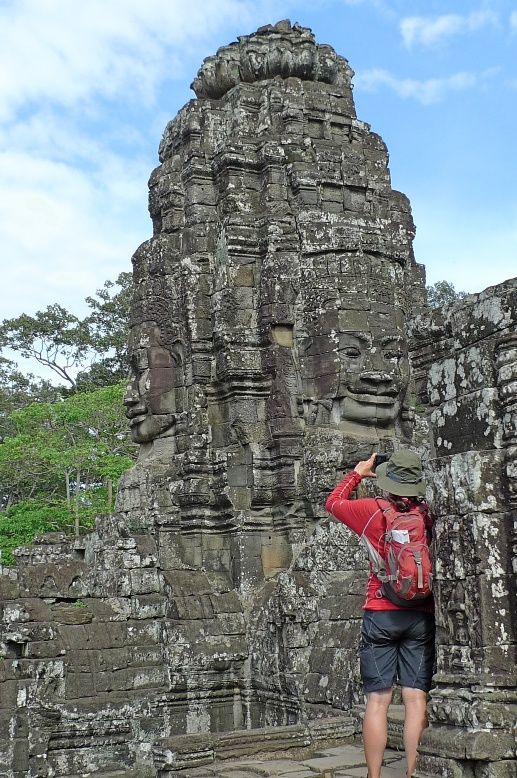
There are actually 49 standing face towers (probably less as some had collapsed) with each tower spotting 2, 3 or most commonly 4 faces, each facing the four cardinal points of East, West, North and South.
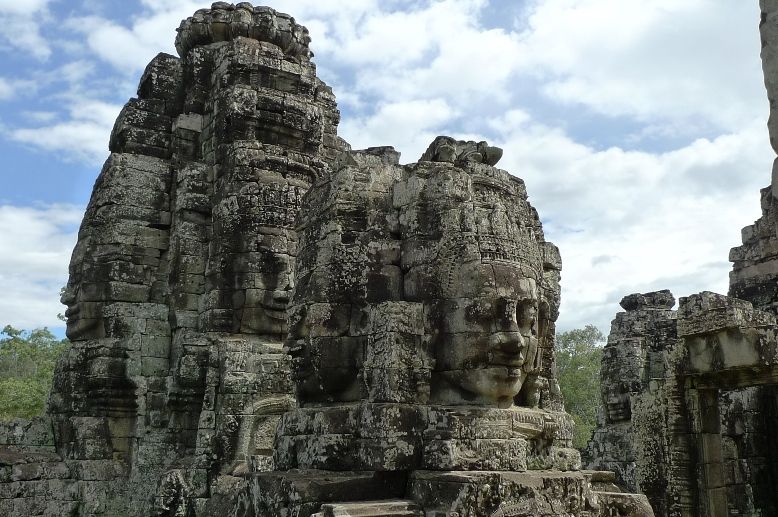
Remember the face tower at the Victory Gate in my
previous post? There is actually a face tower on each of the 5 gates surrounding Angkor Thom. If you were to add up all the face towers in the city of Angkor Thom, the total would stand at 54.
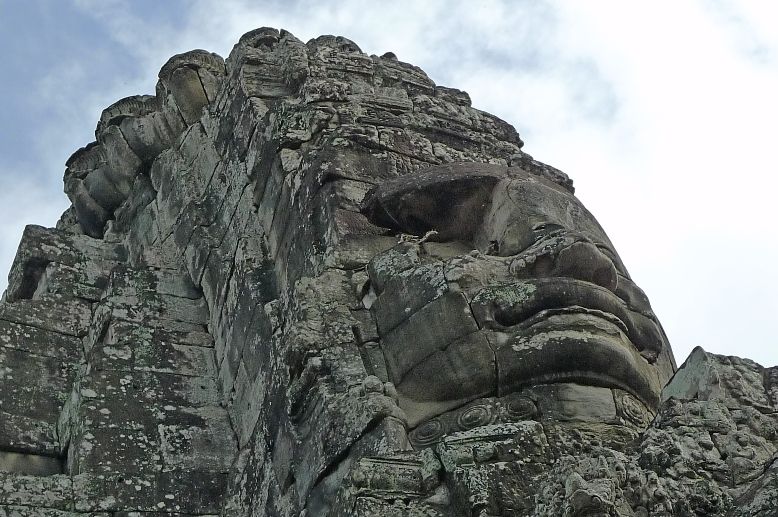
It was a very hot day! The sun was burning my skin. I went back down the stairs to walk through the narrow walkways to temporarily avoid the sun. Standing at this spot and looking up the sky was amazing!
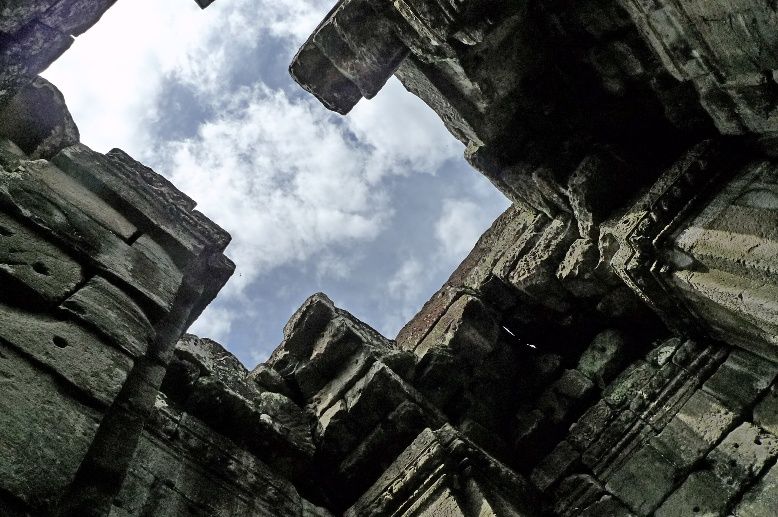
Look at those rocks piling up to the ceiling. Incredible!

The dark passageways were like mazes - I almost got lost walking in them! But it was a good shade from the unforgiving sun.

I even enjoyed looking at tourists! LOL!
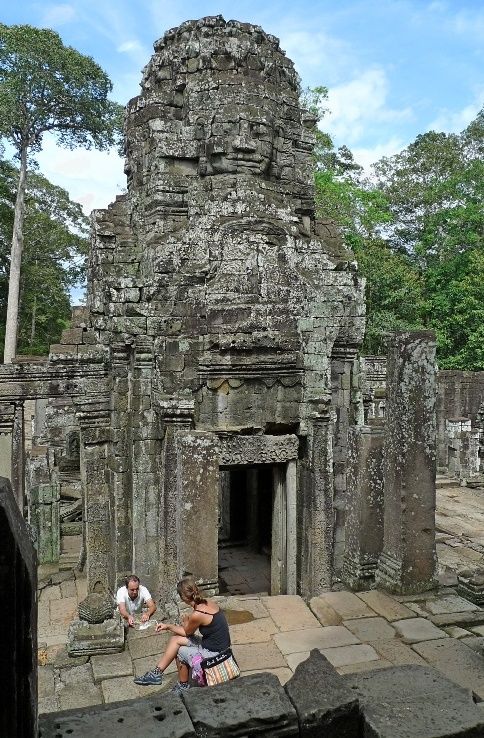
Now the giant stone faces were believed to be the faces of Avalokitesvara, the bodhisattva of compassion. However, many scholars also believed they are the faces of King Jayavarman himself!

Some of the faces have weird, mysterious smiles that can rival Mona Lisa's!
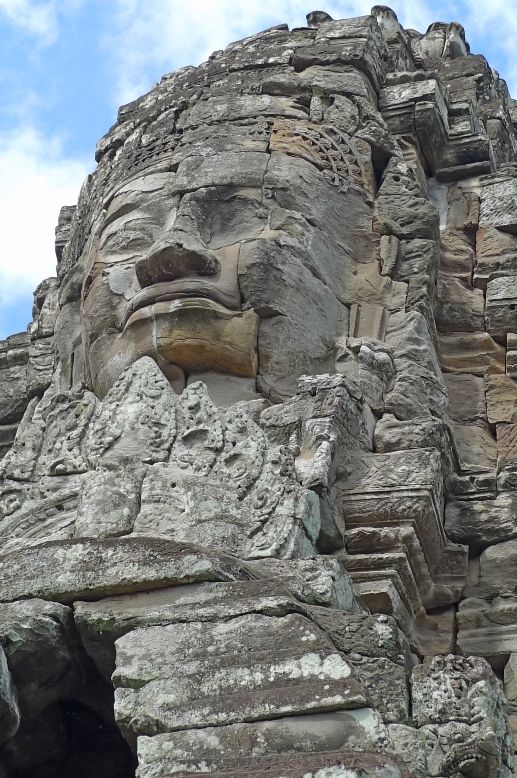
Like this famous Smile of Bayon!
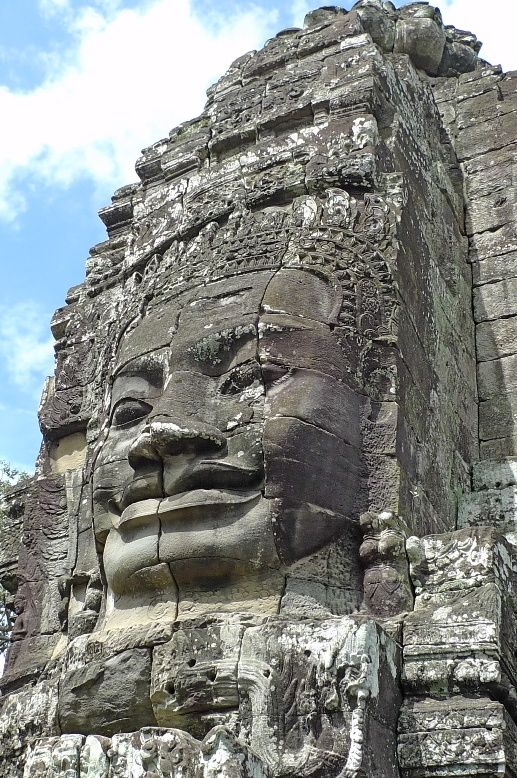
Take a closer look at his mysterious smile.
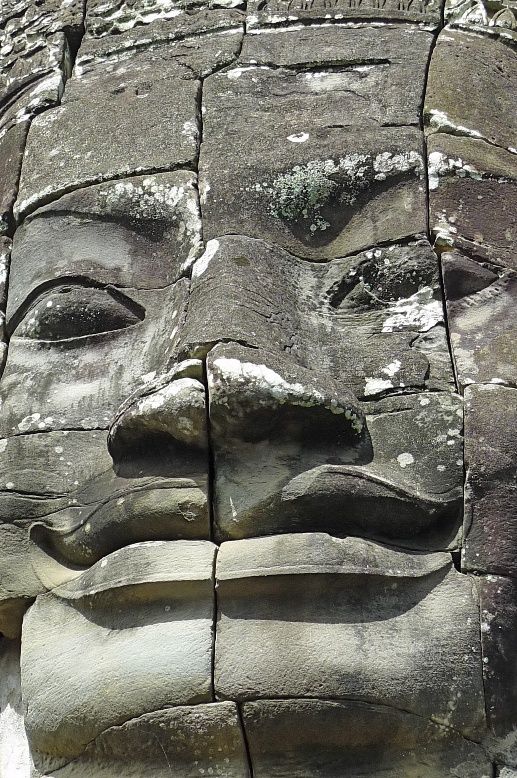
A side view of the Smile of Bayon.
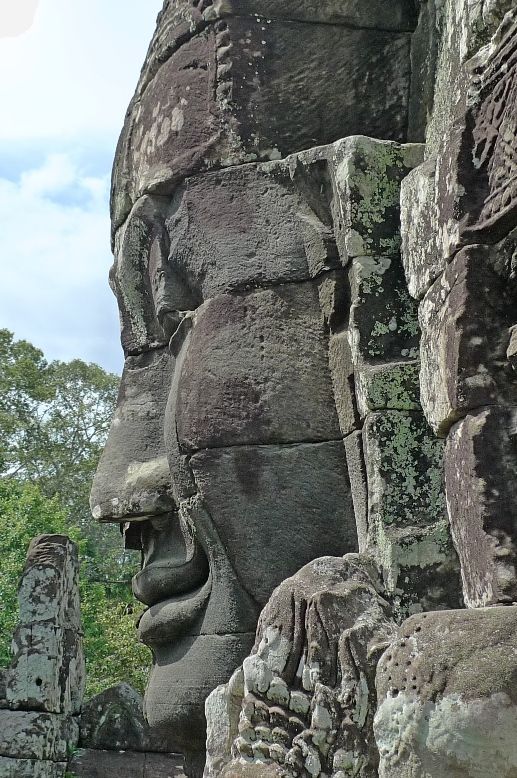
The Bayon Temple had been described as the most striking expression of the baroque style of Khmer architecture, as contrasted with the classical style of Angkor Wat, which I would be visiting later in the afternoon.
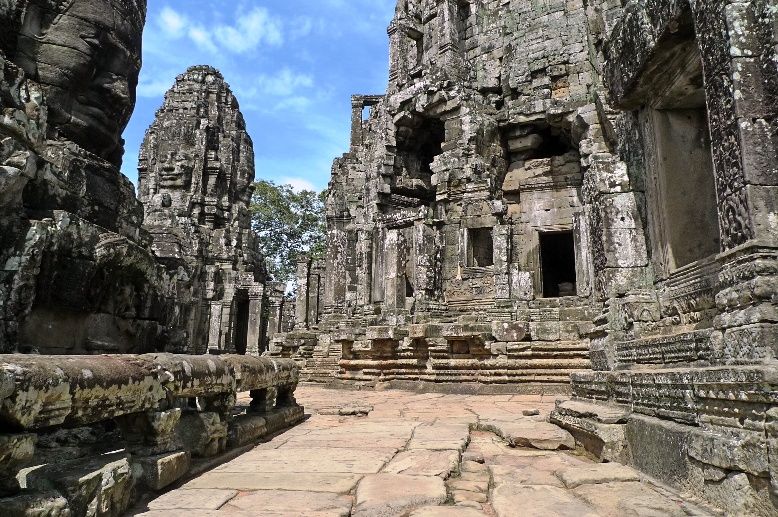
I found the temple a little claustrophobic due to the close proximity of the walls and it did not have the kind of grandeur or majestic feel unlike Angkor Wat.
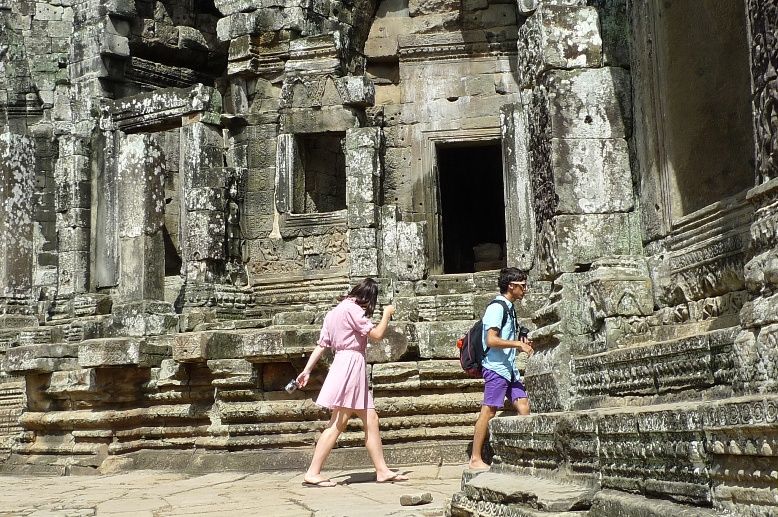
However, it was certainly the most interesting temple ruin I visited, especially with the huge stone faces of Avalokitesvara or Jayavarman. It did however feel a little eerie as if you were being watched by those huge stone faces!
 How many faces can you spot here?
How many faces can you spot here? If you plan to visit just two temples in Cambodia, make sure Bayon Temple is one of them! It will surely be a rewarding experience.
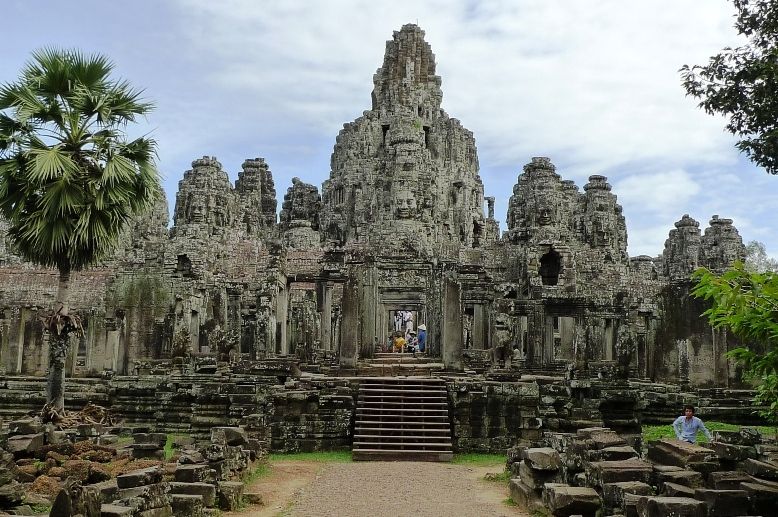 Coming Up Next : Angkor Wat
Coming Up Next : Angkor Wat FIRST COMMENTER































